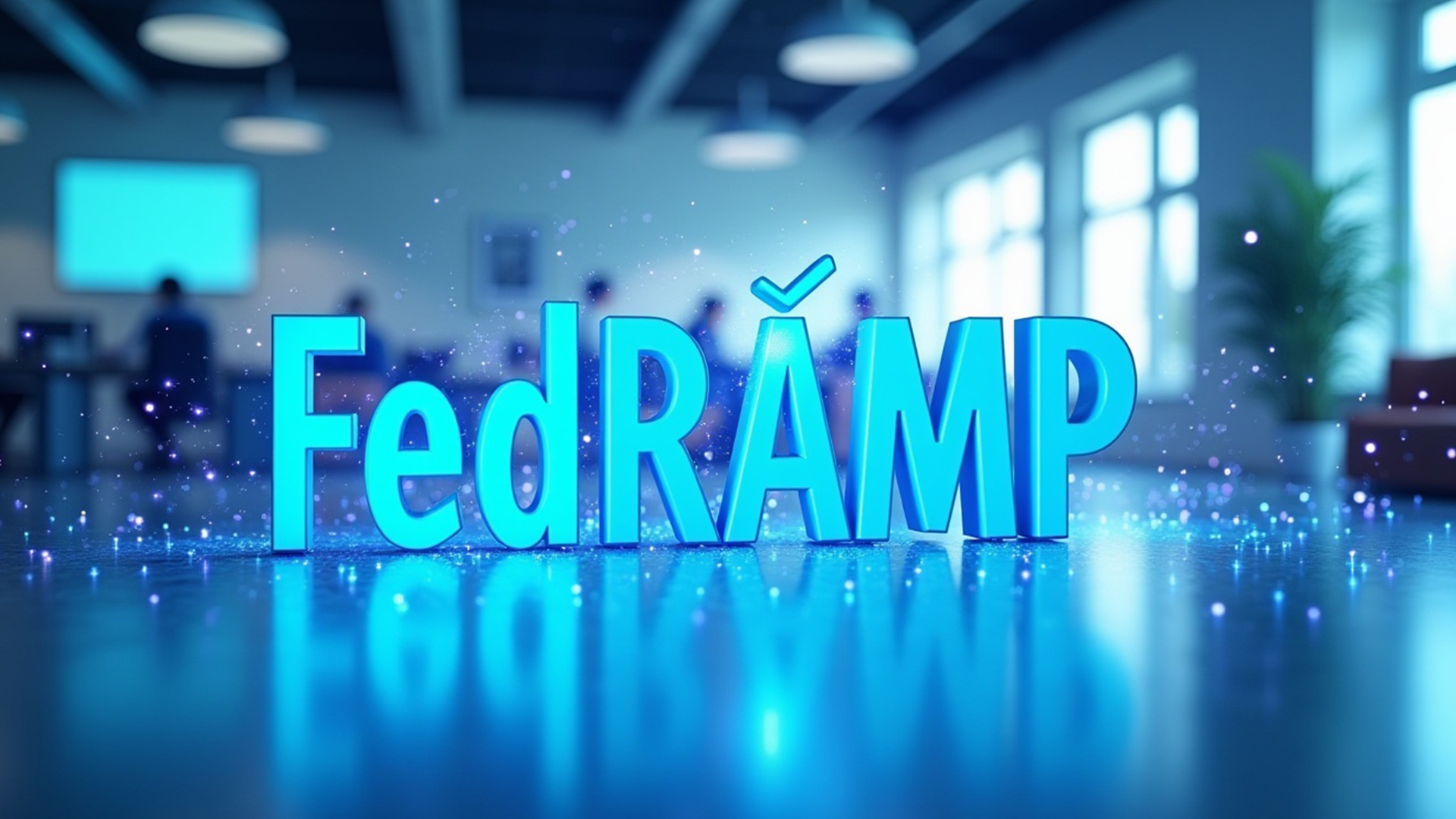
Thank you
Our team of industry domain experts combined with our guaranteed SLAs, our world class technology .


Get Immediate Help
Navigating the FedRAMP authorisation process can be daunting for cloud service providers (CSPs) looking to work with US federal agencies. Achieving FedRAMP compliance ensures that your cloud service meets stringent security requirements, making it a crucial step for gaining trust and market access. However, the process involves multiple stages, audits, and technical assessments that can seem overwhelming. This guide simplifies the journey, outlining key steps, best practices, and how your organisation can efficiently obtain FedRAMP authorisation.

The Federal Risk and Authorisation Management Program (FedRAMP) is a government-wide initiative that standardises security assessments, authorisations, and monitoring for cloud products and services. It ensures that CSPs meet federal cloud security compliance standards before they can provide services to government agencies.
The authorisation process involves:
Preparation – Assessing security posture, identifying gaps, and preparing security documentation.
Assessment – Undergoing a rigorous security review conducted by a Third-Party Assessment Organisation (3PAO).
Authorisation – Gaining approval from either a federal agency or the Joint Authorisation Board (JAB).
Continuous Monitoring – Maintaining compliance with ongoing security assessments and updates.
Each stage is designed to ensure that cloud security assessments align with federal requirements to mitigate cyber risks.

Step 1: Understand the FedRAMP Security Requirements
Before starting the authorisation process, CSPs need to familiarise themselves with FedRAMP security controls. These controls fall under three security impact levels:
Low – Protects low-risk data such as public information.
Moderate – Covers controlled unclassified information (CUI) and data requiring more security safeguards.
High – Ensures the highest level of protection for sensitive government operations.
Understanding where your organisation fits is the first step in determining your compliance strategy.
Step 2: Choose an Authorisation Path
There are two main routes to obtaining FedRAMP authorisation:
Agency-Sponsored Authorisation – A federal agency partners with a CSP and supports them through the compliance process.
JAB Provisional Authorisation (P-ATO) – Approval from the Joint Authorisation Board, consisting of key agencies like DHS, GSA, and DoD. This path is more competitive and rigorous.
Selecting the right pathway depends on your organisation’s resources, target clients, and risk profile.
Step 3: Conduct a Security Readiness Assessment
A FedRAMP assessment requires CSPs to document and implement a Security Control Implementation Summary (SCIS). This process involves:
Performing an internal security audit using a security audit checklist.
Implementing FedRAMP security controls such as encryption, multi-factor authentication, and continuous monitoring.
Preparing a System Security Plan (SSP), detailing the security architecture and risk management approach.
Step 4: Engage a Third-Party Assessment Organisation (3PAO)
A 3PAO is a certified assessor that conducts an independent review of your security controls and prepares a Security Assessment Report (SAR). This step is critical to ensuring compliance and readiness for the next stage.
Why is this important? 3PAOs provide validation that your security measures align with government security standards.
Best practice: Choose a 3PAO with experience in your industry to streamline the process.
Step 5: Submit for Authorisation
Once the security assessment is complete, CSPs submit their security documentation to the sponsoring agency or JAB for review. This includes:
The Security Assessment Report (SAR)
The Plan of Action and Milestones (POA&M) for addressing any identified weaknesses
Continuous monitoring plans for maintaining compliance
After a thorough review, CSPs receive either an Authority to Operate (ATO) from an agency or a Provisional Authority to Operate (P-ATO) from JAB.
Step 6: Continuous Monitoring and Compliance
Obtaining FedRAMP authorisation is just the beginning. CSPs must implement a Continuous Monitoring Plan to:
Regularly update security controls
Submit periodic compliance reports
Perform ongoing vulnerability assessments
Address new cybersecurity threats as they emerge
Failure to meet continuous monitoring requirements could result in the loss of FedRAMP compliance.
Navigating Complex Security Requirements
Solution: Work with experienced compliance consultants and managed security services.
Lengthy Authorisation Process
Solution: Prepare documentation early and engage with a 3PAO to identify gaps.
Maintaining Continuous Compliance
Solution: Use automated security monitoring tools and threat detection services.
Meeting Government Security Standards
Solution: Implement cloud security assessments that align with FedRAMP’s requirements.
Achieving FedRAMP compliance requires expertise in security frameworks, regulatory requirements, and risk management. Microminder Cybersecurity offers tailored solutions to help organisations navigate the FedRAMP authorisation process, including:
Cloud Security Assessments – Ensuring that your cloud services meet FedRAMP’s stringent security requirements.
Security Architecture Review – Identifying and mitigating vulnerabilities before assessment.
Threat Intelligence and Continuous Monitoring – Providing proactive security insights to maintain compliance.
Compliance Consultation Services – Helping organisations prepare for FedRAMP audits and streamline the authorisation process.
With a structured approach, expert guidance, and ongoing support, Microminder CS simplifies FedRAMP compliance, enabling your organisation to focus on innovation and growth.
The FedRAMP authorisation process is a critical milestone for CSPs aiming to provide cloud services to US government agencies. While the process is rigorous, it is achievable with the right strategy, preparation, and expert support. By following best practices, leveraging security audit checklists, and implementing continuous monitoring, organisations can achieve and maintain compliance efficiently.
If your organisation is looking to simplify FedRAMP compliance, get in touch with Microminder CS today and let us help you navigate the process with confidence.
Don’t Let Cyber Attacks Ruin Your Business
Call
UK: +44 (0)20 3336 7200
KSA: +966 1351 81844
UAE: +971 454 01252
Contents
To keep up with innovation in IT & OT security, subscribe to our newsletter
Recent Posts
Penetration Testing | 10/11/2025
Cloud Security | 07/11/2025
Cybersecurity | 06/11/2025
What is FedRAMP?
FedRAMP (Federal Risk and Authorization Management Program) is a U.S. government program that standardises security assessments, authorisations, and continuous monitoring for cloud products and services used by federal agencies.Why is FedRAMP compliance necessary?
FedRAMP compliance ensures that cloud service providers (CSPs) meet rigorous security standards before offering their services to federal agencies. It helps maintain data security, reduce cyber risks, and streamline cloud adoption.What are the main steps in the FedRAMP authorisation process?
The key steps include: Preparation: Identifying the impact level (Low, Moderate, or High) and conducting a readiness assessment. Security Documentation: Developing security policies, procedures, and the System Security Plan (SSP). Third-Party Assessment (3PAO): Engaging an independent third-party assessor to review security controls. Authorisation: Submitting assessment results to the FedRAMP PMO, Agency, or Joint Authorization Board (JAB) for approval. Continuous Monitoring: Ongoing compliance checks and security updateHow long does it take to achieve FedRAMP authorisation?
The process can take anywhere from 6 to 12 months, depending on the complexity of the cloud system, security requirements, and readiness level.What are the key security controls required for FedRAMP compliance?
FedRAMP follows NIST 800-53 security controls, which include: Access Control (AC) Risk Management (RM) Incident Response (IR) Data Encryption (SC) Continuous Monitoring (CM) Audit and Accountability (AU)